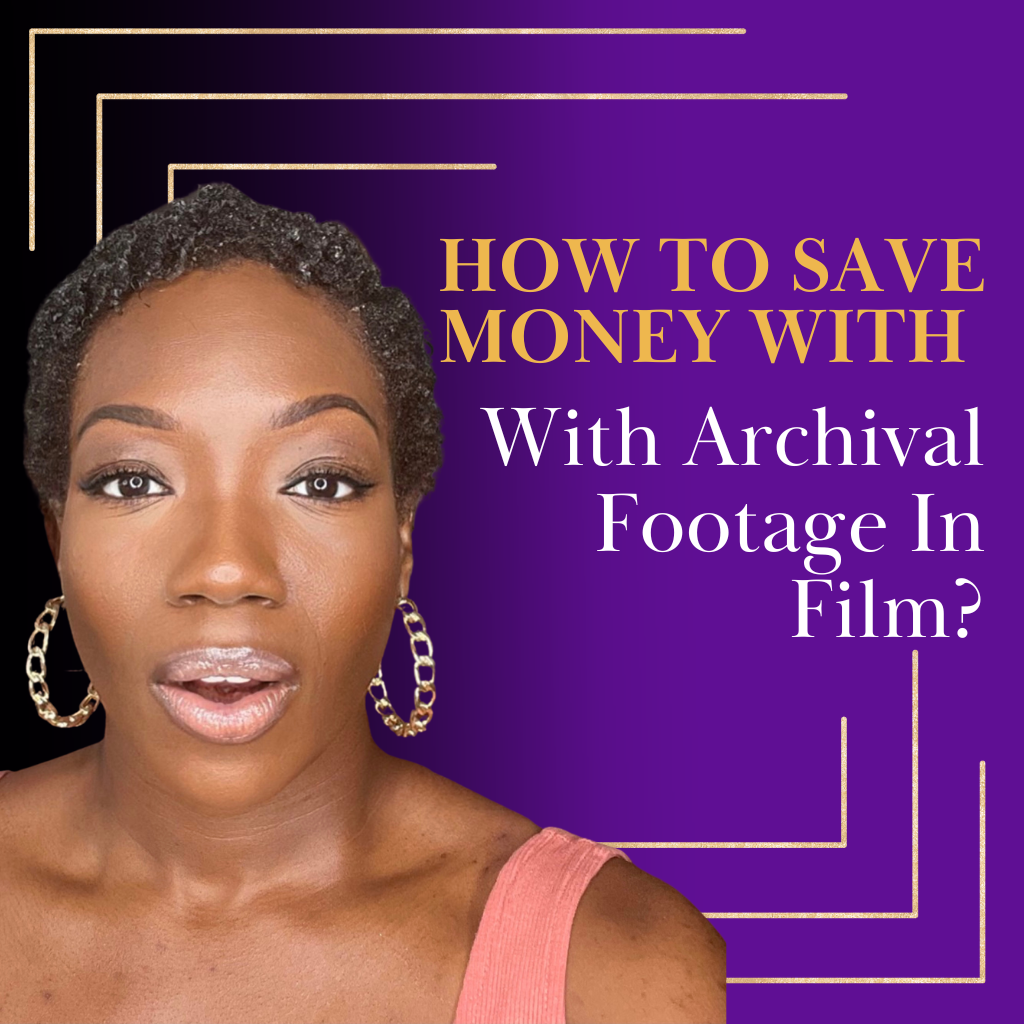How To Save Money With Archival Footage In Film?


“In feature films the director is God. In documentary films God is the director” ~ Alfred Hitchcock
Archival footage can be tough to work with in film and not to mention costly. But it can transcend you back in time when incredible history was made with very limited resources. I had the privilege of experiencing all three ends of the spectrum with archival material (good, bad and exciting) when I landed a part-time PA gig on the award-winning feature-length documentary, When Wire Was King (WWWK).
Let me tell you this film is worthing as it details the history of how our telecommunications industry came about today.
For this project, 90% of its footage was archival material (All praise to you Jennifer Manner!). It was during this experience where I learned how truly expensive and costly archival footage can be. And the word FREE isn’t looking too bad right now.
What is archival footage?
Archival footage is any type of video clip or picture that was captured in the past (usually wars, news, factories, cartoons, politics etc.) and retained by an organization to be used in future filmmaking projects to tell a story. Most are expressed in black and white. If they’re in color most likely the look/quality of it is a bit grainy and will most likely need to be bought in 4K or above.
Check this channel out to get a better sense of what archival footage looks like: https://www.youtube.com/@TheBestFilmArchives
For the gig with WWWK I was required to obtain the full licensing rights (all media, excluding theatrical, worldwide, and in perpetuity) for all the archival clips in the project. I was given a huge spreadsheet to assist the editor with figuring out each archival clips’ timestamp in their rightful company’s stock.
Tedious? Yes, it was. The editor and I probably spent 10-12 hours getting all the clips’ timestamps. Most of the clips were barely 1-minute if not 15 seconds long.
How do you get free archival footage?
You can go to many places such as Pond5, Shutterstock, NBC News, The Associated Press, Getty Images, Periscope Film, F.I.L.M, The Nixon Library, Video Blocks, Vanderbilt/CBS, Adobe, Hagley, Historic Films, Prelinger, Oddball Films, etc. and search up their free video/image options.
Here’s a video that can provide you with more ways to get archival footage for free:
Companies such as Pond5 that usually sell more recent-day archival footage always have sales/discounts as soon as you sign up. You can get multiple clips for free and/or in a bundle for a very cheap price sometimes for no more than $50. Trust me, these deals were such a great help when I needed extra B-footage to finish the editing for my short film. So definitely take advantage of them.
But free sometimes doesn’t always mean the best. Depending on your project (usually documentaries) “paying the price” for archival footage is definitely worth it especially if you’re going to submit your film into major film festivals. And serious filmmakers would want to represent our past moguls in the best way possible, right?
Your Answer: Right Gia!
Once all the timestamps for each archival clip/image were captured along with their descriptions, they were all sent to their respective companies to obtain their screeners. Screeners are the sometimes paid for samples of the requested clips sent to be verified by the purchaser.
This is very important because the actual cost of getting the rights for these clips can range from a couple hundred to a few thousand. So, if you’re shooting a full-length documentary, be very careful and don’t be afraid to ask questions. Any mistake can be crucial.
Once the screeners were approved, our orders were then submitted for processing, payment, and footage download. In one instance with this one particular archival film company, I did exactly as I described above. I submitted the order with no errors. Now remember, with archival footage companies usually charge between $55-$85 per second for their footage. This particular film company required a minimum financial amount for an order to be processed.
A day or two later, we receive an email back from one of the representatives informing us that a certain portion of our order couldn’t be fulfilled because they were owned by another company.
So, we proceed to look for alternate clips. It was our assumption that the company would remove those rejected clips from our order. They did not. They actually charged us for them.
Is archival footage fair use?
It can be but not all the time. (Refer to the video above for more insight). To help you determine if your archival footage is fair use, consider hiring a “Fair Use Attorney” or if you have good negotiation skills, reach out to the representative of the company and fight for it. The EP for WWWK, Jennifer Manner did it for many of her archival clips and in most cases she won.
We were so confused. We immediately began to plead our case because the amount they charged us for was not minimal at all. I mean, why would you advertise clips on your website that you couldn’t provide licensing for? Why would you charge us for clips that you said were owned by someone else? Can you do exchanges at least? What about a refund?
The responses we got to these questions astonished me. Even though WWWK has gone on to do extremely well in the film world, you always have to remember as a filmmaker, it’s all about business. Always be well-organized, ask questions, and keep a good paper trail.
What are the benefits of archival footage?
In my personal opinion, archival footage allows us to go back in time. It reminds us of the important life-changing events in our history that can be retold 20-50 years or more later. The long periods of struggle, pain, and perseverance that our ancestors and idols went through to provide the rights, privileges, traditions, religion etc. that we today take for granted is very important.
I mean, archival footage is humbling! And a lot of us need to be humbled.
How do you credit archival footage?
Usually when you finish purchasing the archival footage you need for your film, on the receipt / company website, it will tell you specifically how you should credit their company in the credits section of your film. Or you can simply ask the representative you end up working with.
What crazy experiences have you had with archival material? Let me know in the comments below.
Other posts you may be interested in:
- How To Get Through Your First Table Read?
- What Happens As A Producer During A Film Production?
- How Important Is Production Design In Film?
Disclaimer: The author is not liable for any losses or damages related to actions of failure to act related to the content in this article. If you need specific legal advice, consult with an attorney who specializes in your subject matter and jurisdiction.
Related
Related Posts
The Importance Of “Live” Auditions In Film
“All hands-on deck”! Realizing that the DP wasn’t going to have the necessary…
Related
How Important Is Production Design In Film?
Ever wonder how production design can impact your film results? Read how I found out…




How Second Chances Can Lead To Film Success - Gia's Crazy Life | 20th Sep 22
[…] How To Save Money With Archival Footage In Film? […]
How Important Is Visual Effects In Film? - Gia's Crazy Life | 21st Oct 22
[…] How To Save Money With Archival Footage? […]
israelnightclub.com | 16th May 23
Itís nearly impossible to find educated people in this particular subject, however, you seem like you know what youíre talking about! Thanks